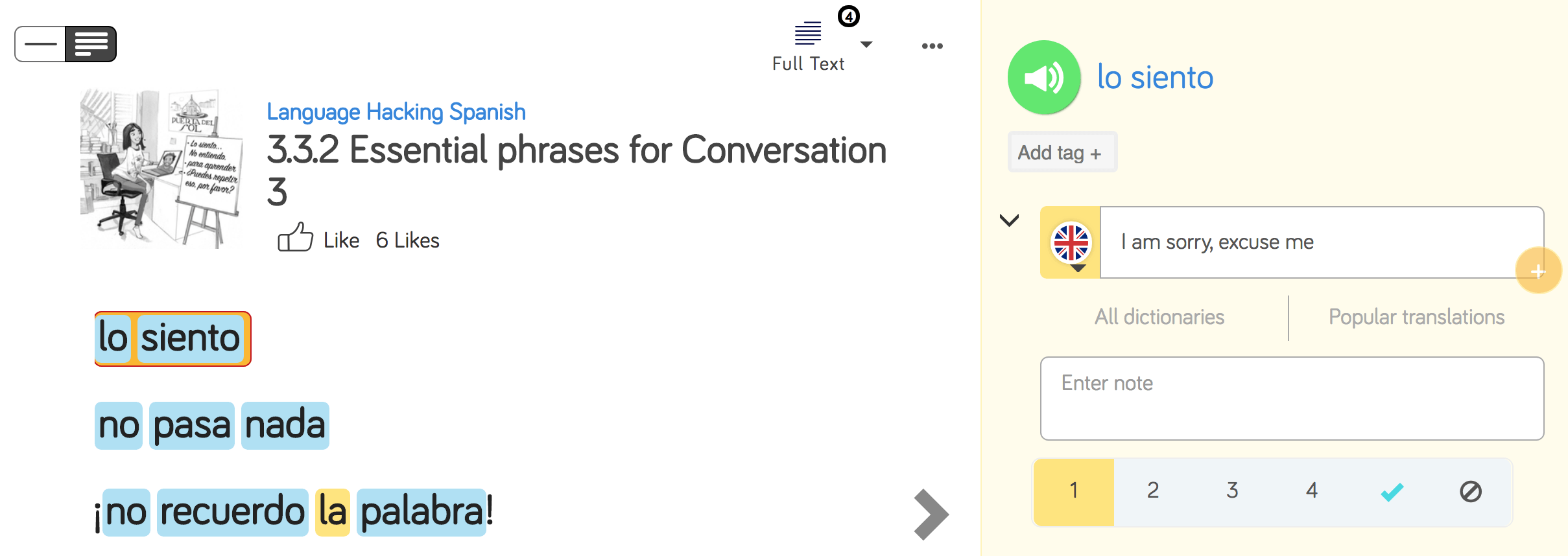Spanish Days of the Week
Whether you’re teaching yourself Spanish or studying abroad, one of the first things to have down pat is the days of the week.
Without knowing the calendar days, it’ll be tough to arrange meetings, discuss plans, and do anything that requires dates. Imagine how difficult (and devastating) it would be if you arranged to meet your new friend on Tuesday but thought he said Wednesday.
That’s why we’re going to teach you some tricks to quickly remembering the Spanish days of the week.
Spanish Days of The Week
First of all, it’s good to know that most of the time in Spanish the week starts on a Monday. Here’s how to say the days of the week:
Monday: lunes
Tuesday: martes
Wednesday: miércoles
Thursday: jueves
Friday: viernes
Saturday: sábado
Sunday: domingo
You might have noticed that the days don’t begin with a capitalized letter, so no need to add one.
Tricks to Help You Remember
One thing that may help you remember the days of the week is to make it a habit to read or write them each day.
You can even go so far as changing your entire phone into Spanish (but be careful if you’re new at the language as it can be extremely frustrating). The most important change would be to have the date show in Spanish. If you don’t want to go all in, you can just download a Spanish calendar app.
Make A Song
Searching “days of the week songs in Spanish” on Youtube will give you a few examples of songs to help you remember.
They’re mostly geared toward children, but super catchy and will get stuck in your head (a good thing for memorizing!) This is an especially silly but fun one.
Use An Acronym
Remember using mnemonic devices to help you remember back when you were at school? Creating an acronym can definitely help you remember the Spanish days of the week too.
The letters here are L, M, M, J, V, S, D. If you need inspiration, how about something like this:
Little
Merry
Mice
Jump
Very
Skillfully
Down
Other Things to Remember
When learning the days of the week in Spanish, there are a few things that you will have to remember that aren’t usually the case in English.
Gender
As you likely have already learned, Spanish has feminine and masculine genders. The days of the week are no exception. The easy part? They are all masculine (el).
You’ll need to remember that when talking about specific days:
el viernes pasado(last Friday)
When talking about certain days in plural form, for example when saying that every Tuesday you eat lunch out, you can use “los”, which is the masculine plural form:
Yo como afuera todos los martes. (I eat out on Tuesdays.)
You can also refer to the days by using “un”, which means “a” in English. When you don’t know an exact date, for example you just knew it was a Thursday, you can use the word “un”.
Un jueves en Febrero, fui al parque de diversiones. (One Thursday in February, I went to the amusement park.)
When you are talking about days of the week but not specifying which one, you can say: “algunos”, which means “some”.
Algunos domingos, voy a la iglesia. (Some Sundays I go to church.)
Knowing that the gender of the days of the week is masculine means that any adjective that goes along with these days also has to be masculine.
Fue un sábado aburrido. (It was a boring Saturday.)
You also don’t have to work in the word “el” which is like the word “on” in English.
Estaba pensando en ir al cine el miércoles. (I was thinking about going to the movies on Wednesday.)

Plural Form
This one is also an easy “rule”. To make the days of the week plural, you simply add an “s” to the end of the word if it doesn’t already have one. If it does, just leave it as it is.
For example:
los lunes
los martes
los miércoles
los jueves
los viernes
los sábados
los domingos
Knowing the days of the week is already a huge step, but what good would it do if you knew the days of the week but didn’t know how to express yourself using them? Here are some phrases you can use.
Wan to remind a co-worker that today is Friday? Try these:
Hoy es… (today is…)
Hoy es viernes. (Today is Friday.)
Your appointment is on Thursday (tomorrow). How do you let your teacher know?
Mañana es… (Tomorrow is…)
Mañana es jueves. (Tomorrow is Thursday.)
Side note: Mañana also means morning.
Lastly, you want to be able to talk about the past, specifically the most recent past, or what happened to you yesterday.
Ayer fue… (Yesterday was…)
Ayer fue martes. (Yesterday was Tuesday.)
Side note: As with English, you need to use the past tense of “is” in Spanish which is “fue”.
Bonus phrases:
El día (day)
¿Qué día es hoy? (What day is it today?)
La fecha (date)
¿Cuál es la fecha de hoy? (What’s today’s date?)
El próximo… (Next…) The day comes after próximo
El…pasado (Last..) The day comes after el and before pasado
Learn Spanish Faster Using LingQ
Immersing yourself in Spanish doesn’t require you to travel abroad or sign up for an expensive language program.
However, it can be a bit tiresome to find interesting content, go back and forth between sites, use different dictionaries to look up words, and so on.
That’s why there’s LingQ, the best way of learning Spanish online because it lets you learn from content you enjoy!
You can import videos, podcasts, and much more and turn them into interactive lessons.
Keep all your favorite Spanish content stored in one place, easily look up new words, save vocabulary, and review. Check out our guide to importing content into LingQ for more information.
LingQ is available for desktop as well as Android and iOS. Gain access to thousands of hours of audio and transcripts and begin your journey to fluency today.

***
Adriana Rodrigues is a Peruvian-American who has travelled the world playing soccer and learning languages. In addition to Spanish, she knows German, Portuguese, and English.


